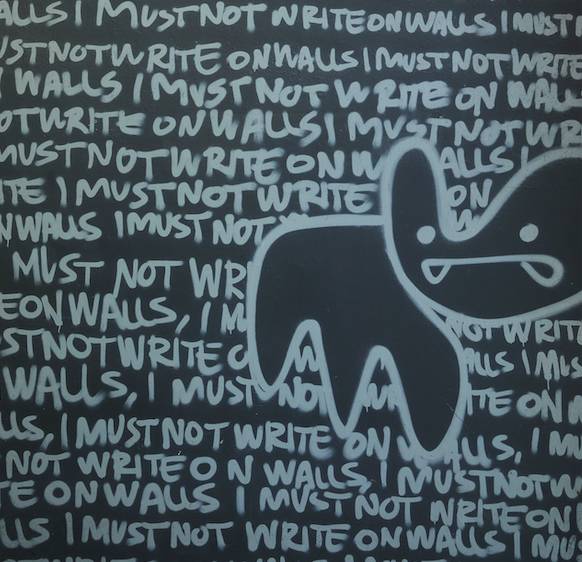

It’s no secret everyone has a lot going on. As such, finding work-life harmony in your calendar is seemingly impossible to accomplish. You’re constantly running from work to a social gathering before trying to catch up on chores. You end the day exhausted with what feels like a million things left unfinished. Simply put, you have an imbalance and are struggling to manage everything on your plate.
It doesn’t have to feel that way, though. You can turn your calendar into a tool that encourages you to get it all done without feeling overwhelmed. It just takes a bit of practice. Here’s a guide on how to get started.
Determine What Balance Looks Like For You
Typically, balance is when two sides are perfectly equal. But life, work, and everything else you’re juggling isn’t so black and white. As such, it’s only natural that what balance looks like to you will likely be different than someone else. And that’s OK.
You may feel your best when your schedule is packed with social engagements — and your work is busy, too. Another person may prefer more downtime to relax and prioritize a slower lifestyle. Despite looking vastly different, both people could feel like their lives are in harmony. That’s because there’s no one-size-fits-all approach to managing life’s responsibilities.
Think about your daily life and when you feel your best. Do you fall into the group that thrives in the hustle and bustle? Or are you fueled by a more flexible, calm schedule? Perhaps you find yourself somewhere in the middle.
Knowing which type of person you are helps inform the steps you take to achieve and maintain a healthy lifestyle. From there, you can be more confident in what you can take on without throwing your work-life harmony out of whack. You can decline extra activities that don’t align with your schedule or take on new challenges that do. The result is a calendar full of things you love that are unique to you.
Create a Routine
If you go into each day with no real plan, it’s hard to feel like your life is together. You’ll likely spend the day trying to determine your next step, haphazardly hopping from task to task. There’s a lack of rhyme or reason to your approach because you’re operating from a disorganized starting point. Instead, strive to make a routine that provides structure.
One way to approach this is by assigning different goals to each day of the week. Sunday can be for self-care, while Monday is dedicated to work productivity and being active. Tuesday and Wednesday can focus on cleaning up your home and hobbies, while Thursday becomes your go-to date night. Friday and Saturday can be for relaxation and socializing. This approach ensures you’ve allotted enough time to get everything you want and need to do completed.
Scheduling self-care at the start of the week can help you relax and recharge for the week ahead. Explore adding meditation, yoga, or perhaps a massage to your schedule. While some of these habits can get expensive, there are cost-efficient alternatives. Blends of Earth, for instance, is a natural turmeric-infused massage oil to improve your skin, relieve muscle aches, and combat joint pain.
Regardless of the types of routines you schedule for yourself, it’s crucial to create space for them on your calendar to ensure that other commitments don’t interfere. Put all of your goals in your calendar and update them weekly. Then, track your progress on each goal at the end of the day. From there, you can shape the rest of your week to ensure everything gets checked off.
Practice Patience and Flexibility
No matter how much you plan, there will be curveballs. Your tire might get a nail in it, or your kid could get sick. Your power could go out, or you may encounter technology issues. These are unfortunate but normal parts of life, so practicing patience and flexibility is important.
If you are prepared to host loved ones at your house but come down with an illness — try not to make yourself feel worse. Look at your calendar and reschedule, or try hosting a virtual gathering. Adjust if you had planned to go to the gym but have to deal with something unplanned. Go for a long walk later or try an at-home workout. Fitness On Demand, Planet Fitness, and even YouTube have a lot of great at-home workouts to try.
As much as you plan and color-code your calendar with each priority assigned appropriately, you can’t plan for everything. Life events will pop up out of nowhere and disrupt your harmony. That’s unfortunate, but it happens.
Make it your goal — and opportunity to pour your energy into whatever needs your focus most. Even if you don’t hit all your goals, at least you’re doing the most important thing at the moment — and that’s your best strategy. Then, when the dust settles, you can fall back into your tried and true routine.
Establish Boundaries
With your idea of balance in mind and a new routine in place, you’re making great progress. However, it’s a moot point if you fail to establish boundaries that make achieving your work and life goals possible. So, the next step in your journey should be to craft the right boundaries to maintain balance.
Think about the factors that make your days feel a bit off. Maybe your work schedule goes haywire because of last-minute meetings that aren’t really necessary. Or perhaps your social calendar gets thrown to the wind because your friends never manage to make a reservation. Your goal is to figure out whatever makes your days feel more challenging.
Armed with that knowledge, you can think about the best boundaries for you. That might be not accepting last-minute meetings that aren’t business-critical to reclaim your work time. It may be a requirement that dinner plans are made ahead of time, especially on busy nights. Use this approach to make a list of your expectations for every priority area of your life.
Now, you’re prepared for the unexpected schedule changes life may throw your way. All that’s left to do is to communicate your newly outlined boundaries with the people in your life. Stick to them as best you can — with as few exceptions as possible — for a better, more balanced schedule.
Stay In Touch With How You Feel
As time passes, it’s essential to keep your finger on the pulse of how you’re managing your time. That’s how you can really tell if the steps you took to achieve work-life harmony are actually working. So, go back to the beginning to evaluate your calendar.
Start by asking yourself a few questions. When you think about your schedule, does it give you anxiety? Are you struggling to keep up with work responsibilities? Have self-care or social engagements fallen to the wayside? If any of those answers are yes, it may be time to re-evaluate.
An easy way to achieve harmony again is by thinking back to when your life felt most manageable. Try to recall what you were doing daily and how you managed to stay on top of your responsibilities. Then, compare that to what you’ve been doing to see if there are gaps and adjust accordingly.
That may include reincorporating old healthy habits into your daily routine, like waking up early or working out. It could be time blocking your calendar to ensure your tasks can be completed on or before they’re due. Or it might just be redistributing your time to accommodate the most pressing need before moving on to other priorities. This kind of adjustment process is challenging, but it’s critical to achieving harmony that withstands the test of time.
Enjoy Your Balanced Life
There will be busy seasons in life fraught with change and adjustments. That’s normal! However, creating a framework that makes you feel more harmonious daily is always worthwhile. That’s how you can simultaneously achieve your professional goals while maintaining your well-being. And that’s really what balance is all about.
Featured Image Credit: Photo by Katrin Bolovtsova; Pexels; Thank you.











Deanna Ritchie
Editor-in-Chief at Calendar. Former Editor-in-Chief, ReadWrite, Editor-in-Chief and writer at Startup Grind. Freelance editor at Entrepreneur.com. Deanna loves to help build startups, and guide them to discover the business value of their online content and social media marketing.